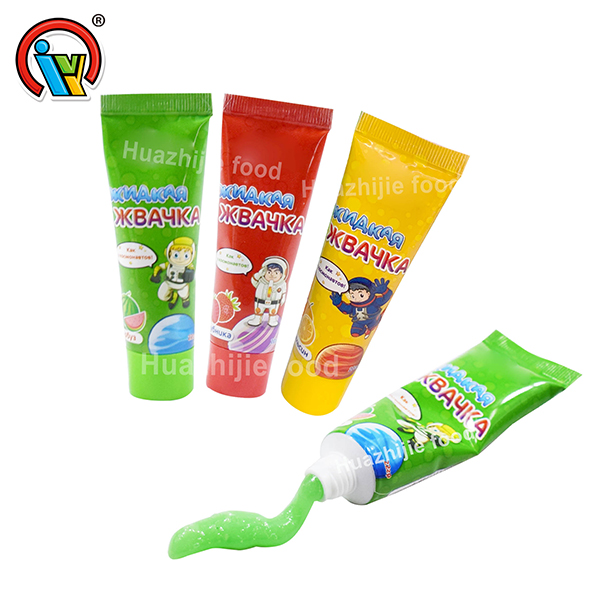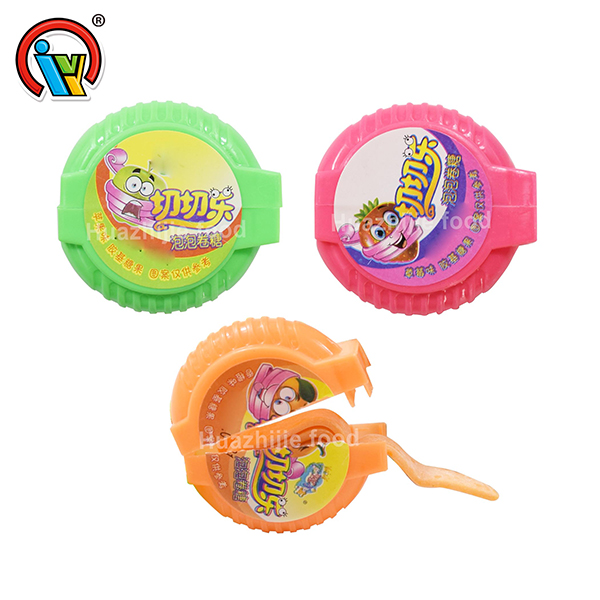It's interesting to note that chewing gum was previously produced using chicle, or the sap of the Sapodilla tree, with flavorings added to make it taste good. This substance is simple to mold and softens in the warmth of the lips. However, chemists discovered how to make artificial gum bases to replace chicle after World War II using more readily available flavor- and sugar-enhanced synthetic polymers, rubbers, and waxes.
As a result, you might be wondering, "Is chewing gum plastic?" Generally speaking, the answer is yes if the chewing gum isn't all-natural and made from plants. You're not alone in asking this question though, as a startling 80% of respondents to a selected area poll of 2000 people said they don't know..
What exactly is chewing gum made of?
Chewing gum contains different substances depending on the brand and the country. Intriguingly, manufacturers are not required to list any of the components in chewing gum on their products, so it is impossible to know exactly what you are consuming. However, you might be curious about the components of chewing gum. - continue reading to learn the major components.



CHEWING GUM'S MAIN INGREDIENTS INCLUDE:
• GUM BASE
Gum base is one of the most common chewing gum ingredients, consisting of three main components: resin, wax, and elastomer. In short, resin is the primary chewable component, while wax softens the gum and elastomers add flexibility.
Natural and synthetic ingredients can be combined in the gum base. Perhaps most intriguingly, depending on the brand, gum base can include any of the following synthetic substances:
• Butadiene-styrene rubber • Isobutylene-isoprene copolymer (butyl rubber) • Paraffin (via the Fischer-Tropsch process) • Petroleum wax
Worryingly, polyethylene is commonly found in plastic bags and children's toys, and one of the ingredients in PVA glue is polyvinyl acetate. As a result, it is extremely concerning that we
• SWEETENERS
Sweeteners are frequently added to chewing gum to create a sweet flavor, and more concentrated sweeteners are designed to extend the sweetness effect. These chewing gum ingredients typically include sugar, dextrose, glucose/corn syrup, erythritol, isomalt, xylitol, maltitol, mannitol, sorbitol, and lactitol, to name a few.
• SURFACE SOFTENERS
Softeners, such as glycerine (or vegetable oil), are added to chewing gum to help it retain moisture while also increasing its flexibility. These ingredients help to soften the gum when it is placed in the warmth of your mouth, resulting in the characteristic chewing gum texture.
• TASTEINGS
Chewing gum can have natural or artificial flavors added for flavor appeal. The most common flavors of chewing gum are the traditional Peppermint and Spearmint varieties; however, various tasty flavors, such Lemon or fruity alternatives, can be created by adding food acids to the gum base.
• COATING WITH POLYOL
In order to preserve the quality and lengthen the shelf life of the product, chewing gum typically has a hard outer shell that is generated by a water-absorbent powder dusting of polyol. Because of the combination of saliva and the warm environment in the mouth, this polyol coating is quickly broken down.
• THINK ABOUT OTHER GUM ALTERNATIVES
The majority of chewing gum produced today is made from gum base, which is composed of polymers, plasticizers, and resins and is combined with food-grade softeners, preservatives, sweeteners, colors, and flavorings.
However, there are now a variety of alternative gums on the market that are plant-based and suitable for vegans, making them more appealing to the environment and our stomachs.
Chewy gums are naturally plant-based, vegan, biodegradable, sugar-free, aspartame-free, plastic-free, artificial sweeteners and flavors-free, and sweetened with 100% xylitol for healthy teeth.
Post time: Dec-09-2022





